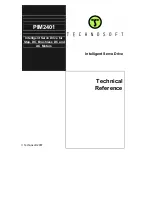
Introduction
3
Introduction
Congratulations on the purchase of your Toshiba ATAPI CD-ROM drive. Read carefully
through this manual in order to install the drive and learn how to use it. For specification
details of your CD-ROM drive, see the accompanying specification booklet.
A New Type of Drive
Early CD-ROM drives operated using CLV (Constant Linear Velocity) where the
amount of data passing under the read head was always constant. This meant that the
rotation speed varied depending on which part of the disk was being read - faster spin for
the inside of the disk and slower spin for the outside.
Your Toshiba CD-ROM drive uses advanced PCAV (Partial Constant Angular Velocity)
which fixes the rotation speed for some parts of the disk. The drive switches
automatically between CAV to achieve the fastest possible access times and CLV to
achieve the fastest possible sustained data transfer rate.
This means that the old designations of fixed rotation speed are less helpful with this
new type of CD-ROM drive - the disk spins at different speeds during different
processes.
The REAL Test
Just spinning the disk faster does not necessarily mean the data is accessed or transferred
any faster. One of the reasons for this is that the laser head must be moved in and out
between the centre and the edge of the disk. The quality of the motor which moves the
laser head is vital as it must accelerate and then stop at exactly the right place on the disk
many thousands of times at incredible speeds.
The quality of the laser mechanism, on-board caching, error correction techniques, the
type of interface and the driver software can all have an effect on the access speed and
transfer rate. This means that a CD-ROM drive rated at a certain data transfer speed
might not really be able to achieve that speed because of bottlenecks elsewhere in the
drive
A drive with slow seek time, poor caching and poor error correction will cause
performance problems. Multimedia applications expect data to be delivered at an
acceptable rate. If the data is not delivered fast enough you notice a degradation in sound
or video quality while the computer waits for the next block of data from the CD-ROM
drive. Sometimes the poor data transfer speed can cause synchronisation between audio
and video material or between data and graphics to fail.


































